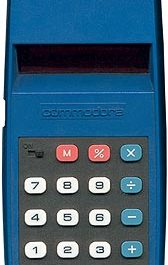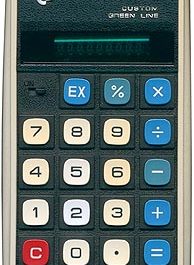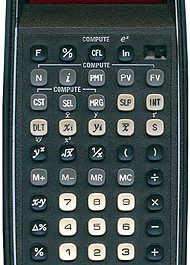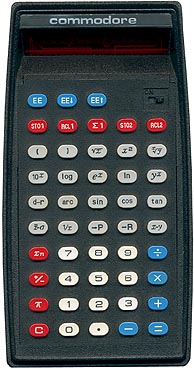
The Commodore SR4148R calculator, introduced in 1975, is from the era when electronic calculators were beginning to replace mechanical slide rules. Manufactured by Commodore Business Machines, Inc., in the U.S. this calculator offered a range of features that catered to both scientific and general mathematical needs.

The SR4148R is housed in a large, tilted, and bowed case made from textured black plastic, giving it a sturdy and durable feel. The display is a 10-digit red LED module with a bubble lens, with an additional two-digit LED module for the exponent, allowing for scientific notation display of 10 + 2. The heavily inset, tilted, and flat red plastic display filter provides a clean and bright image, although with a narrow viewing angle. The calculator features bold colored keys in red, blue, grey, and white, which are small, squishy, and wobbly, producing a soft click when pressed.
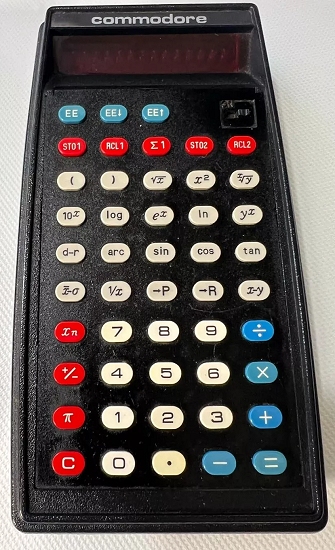
Powered by a 6V sealed rechargeable battery pack consisting of three AA-sized cells, the SR4148R can be charged using an adapter through a socket on the top side. The calculator’s dimensions are approximately 80mm x 150mm x 30mm (width, height, depth), with a weight of 226g including batteries and 158g without.

The SR4148R offers a comprehensive set of features, including standard four functions, brackets, square root, squares, nth root, logs, powers, trigonometric functions, degree-radian conversion, reciprocal, polar/rectangular coordinates, register exchange, statistics, change sign, pi, and a two-function double memory.
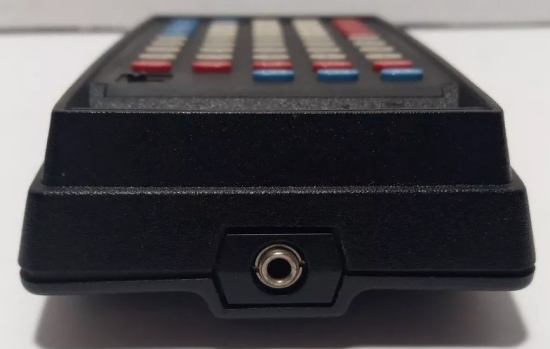
The calculator’s components include a Commodore GHU-03A 7439 CPU, two ITT 546A-5N 7529 ICs, a Commodore GHU-01A ESR-T 7545 IC, a 14-digit LED unit with a bubble lens, a transistor, a diode, four resistors, two capacitors, and a voltage control subassembly. The main board sits loosely on top of the keyboard assembly and is connected by a 21-way ribbon cable. Disassembly is straightforward, involving the removal of two long screws at the rear, allowing the back section to lift off easily.
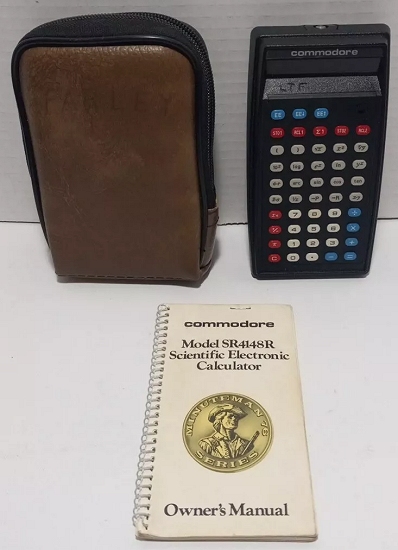
The logic of the SR4148R is sound, although sometimes slow, with certain operations like calculating the sine of a number taking up to three seconds. The calculator lacks recovery from errors and a constant function, which can be inconvenient. The (C) button is used to clear the last entry of a number and, when pressed a second time, clears the entire calculator. Overflow on number input is suppressed, and an overflow error is flagged with an “E” in the eleventh digit, indicating that the number is not recoverable. Similarly, dividing by zero results in an “E” error that is not recoverable. There is no indication of memory store, requiring users to remember if a value has been stored. Calculations appear to be to 12 digits, as demonstrated by specific operations. Negative numbers are flagged by a “-” sign in the eleventh left digit, and the change sign function can be used mid-number entry.
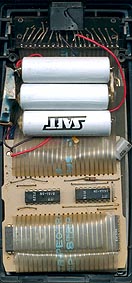
- The (C) button is used to clear the last entry of a number and, when pressed a second time, clears the entire calculator.
- Overflow on number input is suppressed, and typing in an eleven-digit number ignores the eleventh digit.
- An overflow error is flagged with an “E” in the eleventh (leftmost) digit, indicating that the number is not recoverable.
- Dividing by zero results in an “E” error that is not recoverable.
- There is no constant function on any operation.
- There is no indication of memory store, requiring users to remember if a value has been stored.
- Calculations appear to be to 12 digits. For example, entering “1.000000001” and then taking the square root displays “1”. Subtracting 1 from this result gives 4.9 x EE-10.
- Negative numbers are flagged by a “-” sign in the eleventh left digit.
- The change sign function can be used mid-number entry.
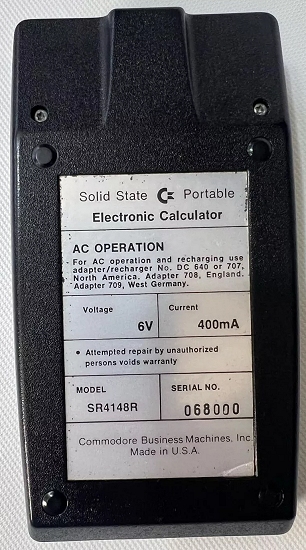
The Commodore SR4148R calculator is a sturdy and versatile scientific tool. Its design and features showcase the technological strides of that era, providing a broad spectrum of mathematical and scientific functions. While it has some drawbacks, like limited error recovery and no constant functions, the SR4148R stands out as an example of early electronic calculators that laid the groundwork for today’s advanced calculators.
